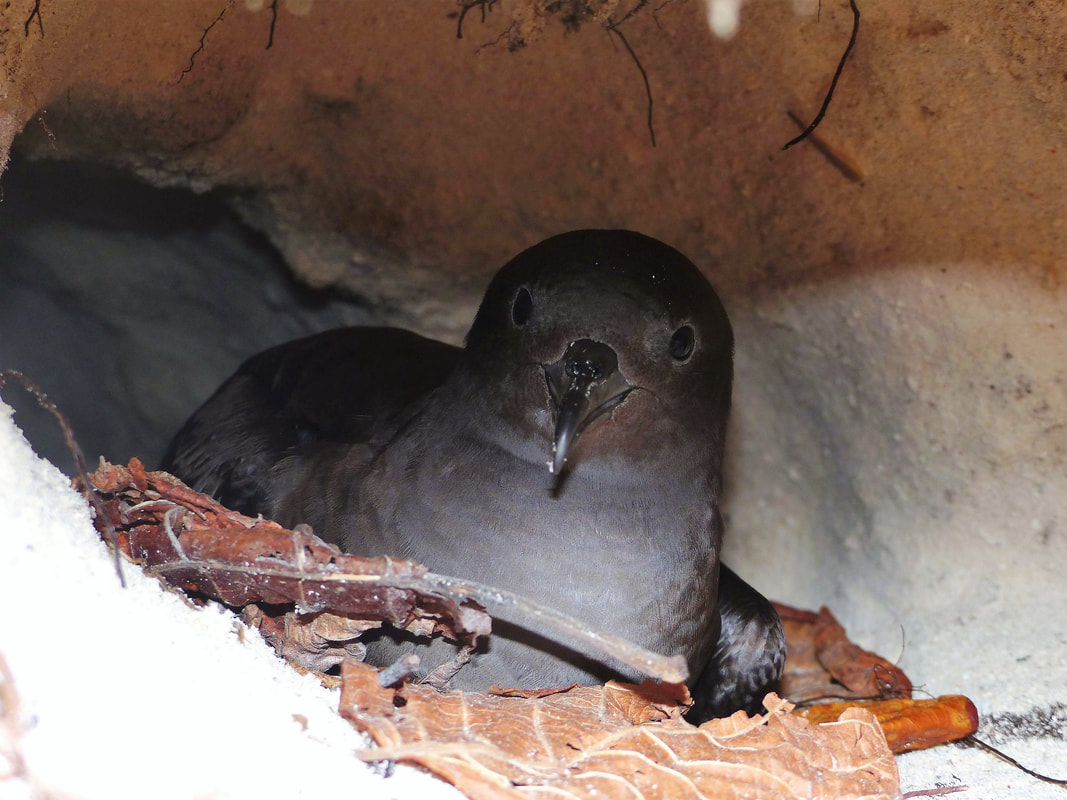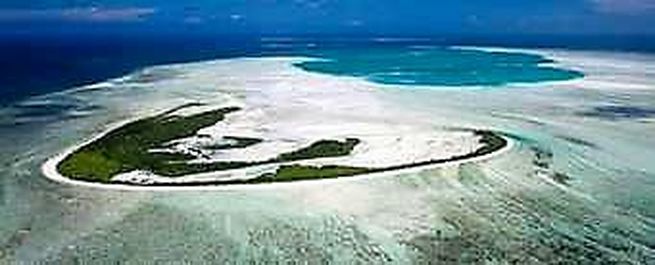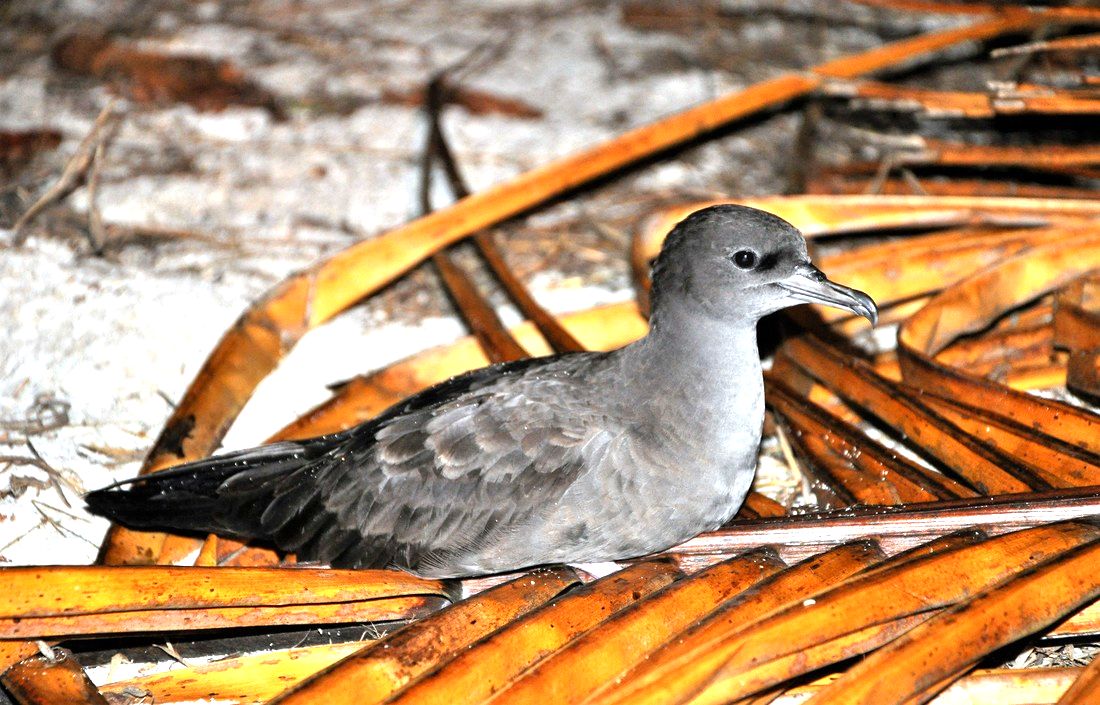Wedge-tailed Shearwater Colony rediscovered on St Francois AtollSaint François Island, at the southern tip of Seychelles’ Amirantes chain, is a haven for thousands of migratory birds. The island hosts small breeding colonies of Black-naped Terns Sterna sumatrana (Dyanman Likou Nwanr, in Creole) and Fairy Terns Gygis alba (Golan Blan) are scattered across the island. Crab Plover Dromas ardeola (Kavalye Loulou) is without a doubt the finest wader species to inhabit the Red Mangrove Rhizophora mucronata forests (Mangliye Rouz), which are also home to uncountable numbers of Fiddler Crabs Uca tetragonon (Loulou Grangalo). Saint François Atoll in the Alphonse Group sprawls over 5,400 hectares; one-third turquoise lagoons and two-thirds endless reef flats. The second island of the atoll, the tiny Bijoutier Island at just two hectares hosts a large breeding colony of Wedge-tailed Shearwater Ardenna pacifica (Fouke Dezil), comprising over 50 pairs. A second smaller breeding colony at Alphonse Island is threatened with extinction by introduced rats and cats. Nests are protected by a grid of rodenticide bait stations, combined with rat and cat trapping. The colony is closely monitored by Island Conservation Society (ICS) staff, who have been resident on the island since the establishment of its Conservation Centre in February 2007. 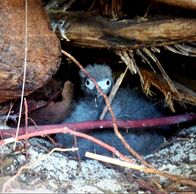 Wedge-tailed Shearwater Chick in burrow. Image credit Pep Nogues Wedge-tailed Shearwater Chick in burrow. Image credit Pep Nogues Discovering a colony of a burrow-nesting, nocturnal seabirds is challenging. Birds feed offshore during the daytime, only returning to land late at dusk. In the early dawn they depart again to fish. In Seychelles, the breeding activity of the birds is synchronized. Late July – September are generally spent courting and establishing nest sites. During this time the adults’ eerie calls and duets punctuate the skies around the colony site, sounding strangely like the cries of a human baby. Egg laying takes place at the end September / October, the nest expertly excavated to the base of a deep burrow. Throughout incubation and fledging, young birds are inconspicuous inside these well camouflaged burrows. Some aspects of fledging behaviour still remain a mystery. Evidence suggests that parents stop feeding their fattened chick whilst still in its burrow. As its plumage develops to fledging stage, the chick’s hunger encourages it to leave the nest and fly independently to sea. Here it will rejoin its parents to learn how to fly and fish. Wedge-tailed Shearwaters range across the tropical Pacific and Indian Oceans at latitudes between roughly 35°N and 35°S. As ground-nesting birds they are particularly vulnerable. Threats to populations include loss of food through unsustainable levels of fishing by humans, predation by invasive species such as rats and cats, and predation by humans. Although illegal in many countries, birds are still captured as a food source, including occasionally in Seychelles. Breeding colonies are primarily known from Australia, Saipan, New Caledonia, Hawaii, Mexico, Mauritius and Seychelles. Early accounts of Wedge-tailed Shearwaters breeding at St. François date from 1951 to 1959. Desiré Gendron, who managed Alphonse Island at that time, reported that the island was home to Fouke Dezil. There were no further reports until more than half a century later, when a fluttering WTS chick was found by Ralph Meyer-Rust, Alphonse Hotel Manager from 2008 to 2013. Ralph’s further investigations in 2013 confirmed the most southerly population of this species known to be breeding in Seychelles. 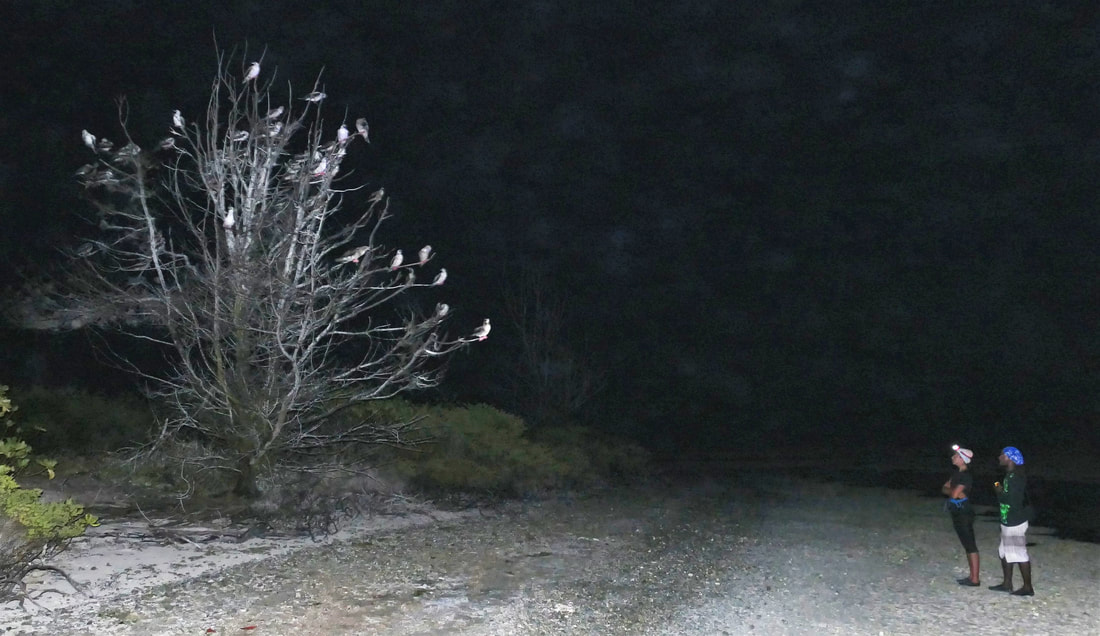 ICS Conservation Team surveying night-roosting Red Footed Boobys on St Francois Island. Image credit Pep Nogues ICS Conservation Team surveying night-roosting Red Footed Boobys on St Francois Island. Image credit Pep Nogues Since 2013, ICS’ field searches to locate breeding burrows and estimate population size had all failed. However, ICS staff refused to abandon the cause, knowing that success is often reached by walking from failure to failure with no loss of enthusiasm! Finally, in October 2017, a breakthrough! While conducting a population census of Red-footed Booby Sula sula (Fou Bet) at Saint François Island, where that species night-roosts in spectacular numbers, the Alphonse ICS Team heard eerie calls coming from inside the Coconut Forest. 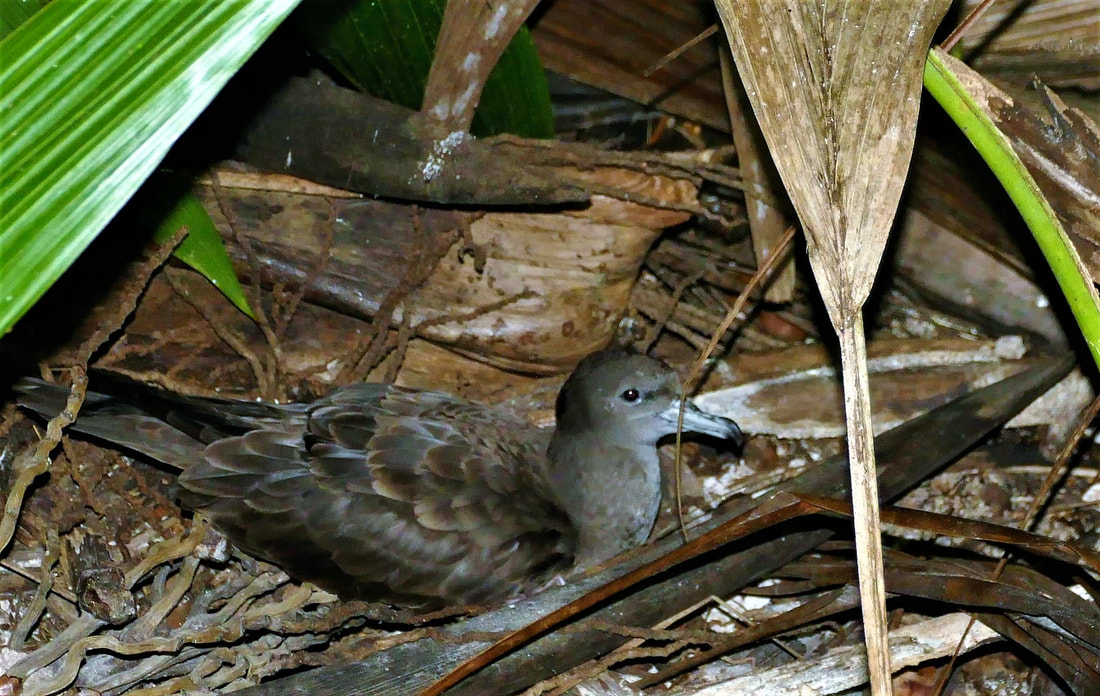 Adult Wedge-tailed Shearwater resting on fallen coconut leaves. Image credit Pep Nogues Adult Wedge-tailed Shearwater resting on fallen coconut leaves. Image credit Pep Nogues ICS Conservation Officer Pep Nogués recalls, “Intrigued, with just a couple of headlights and the omnipresent moonlight to guide us, we ventured into the forest. Five birds were sitting on the ground. On detecting our presence, two of them retreated rapidly into their burrows, excavated under fallen coconut leaves. A few other vocalizations were heard in the vicinity. After examining the area until midnight, our opportunistic survey had revealed the presence of at least five active burrows (5 pairs). To avoid further disturbance, we noted GPS coordinates and continued censusing the Fou Bet”. The ICS Conservation Team are justifiably proud of their efforts - undoubtedly, persistent dreamers are the saviours of the world! Further surveys are now planned, which will help ICS to learn more about the breeding success and population trends for Wedge-tailed Shearwaters in Seychelles. This is a small yet important discovery for the species, and a clear sign that the wildlife of the Outer Islands is recovering thanks to the protection and surveillance that ICS and its partners of the Alphonse Foundation have established over the last decade. Protected Areas such as these in Alphonse are essential for biodiversity conservation; and biodiversity is vital to support the two most important economies in Seychelles - Tourism and Fisheries. Conservation efforts across the Outer Islands are benefitting from greater governmental priority under the GOS-UNDP-GEF Outer Islands Project to expand and strengthen the Seychelles Protected Areas system, which had previously focused on the Inner (Granitic) Islands and Aldabra. Expanding the country’s network of Marine Protected Areas within the Seychelles Exclusive Economic Zone is already helping to preserve Seychelles’ natural environment and resources for future generations of Seychellois.
1 Comment
|
Categories
All
Archives
June 2024
|

